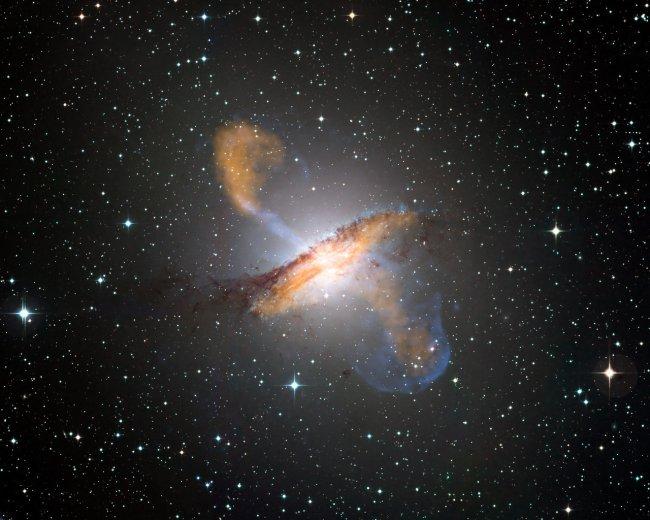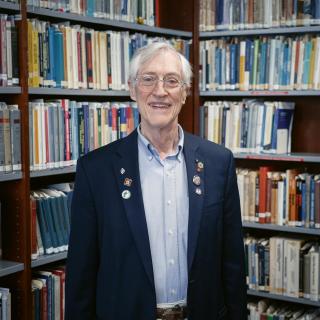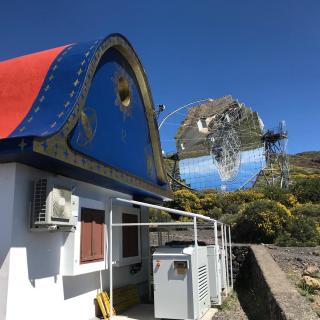What triggers the nuclear activity in galaxies? What are the physical processes around high mass black holes? How important are active nuclei of galaxies in the positive and negative feedback processes which govern the evolution of galaxies? These and related questions will be tackled on October 27th and 28th, by scientists from all over Spain at the IV Spanish Meeting on Active Galactic Nuclei (AGN). The meeting, organized by the Instituto de Astrofísica de Canarias (IAC), will be held at the meeting hall on the Guajara Campus of the University of La Laguna (ULL).
The objective of the meeting is to bring together researchers in this field who are working in Spanish institutions, to present the newest scientific results, and to discuss the main open questions and the way to tackle them, as well as to talk about present technical capacity and infrastructure. “The timing of this meeting” explains Jose Acosta Pulido, an IAC researcher, one of the organizers of the meeting, “is particularly relevant because we are at a point when the Spanish community will soon have access to new instruments on the Gran Telescopio CANARIAS (GTC) EMIR, FRIDA, MEGARA y MIRADAS, as well as access to the space observatories ASTRON, the James Webb Space Telescope (JWST), SPICA y ATHENA”.
The presentations will be organized into short talks, distributed among a number of sessions and dedicated to specific subjects, as well as two special sessions of invited talks which will summarize the instrumental advances most relevant to the study of AGN’s. To cover this part of the meeting, the Network of Astronomical Infrastructure (RIA) will contribute with funding, and payment of travel expenses for doctoral students.
What is an AGN?
A galaxy with an active nucleus (AGN) is one which harbours a very massive black hole at its centre, typically with more than a million times the mass of the Sun, which attracts and swallows the gas and dust from its surroundings, even some nearby stars. This material does not fall directly into the black hole, but spirals slowly inwards, forming an accretion disc around it. This process produces highly energetic winds, and ejections of energy in the form of huge jets of X-rays and gamma-rays, which can travel to large distances from the black hole, and return a fraction of the gas and the energy to the rest of the galaxy.
It is also believed that there is a structure further from the centre than the above mentioned disc, in the form of a toroid, or “doughnut” and that depending on the orientation of our line of sight, this can prevent direct observation of what is happening in the inner zone, and affects the characteristics of the light we receive from the AGN. Even so, an active galactic nucleus is so compact, with a size of just a few light years, that to resolve the internal structure of even the nearest AGN is a big challenge for astrophysicists, even with the largest telescopes.
The relevance of these studies is that a variety of evidence suggests that all (or almost all) galaxies have a high mass black hole in their nuclei, and that all galaxies pass through a phase of nuclear activity during their formation and evolution. When the accretion process stops, the nucleus of the galaxy turns off, leaving an inactive black hole at the centre, as is the case for the Milky Way, our galaxy.
This meeting is the fourth which has been celebrated by the group of Spanish AGN researchers, which has been growing steadily, tackling an increasing range of questions, and receiving increasing international recognition for its contributions.
Scientific Organizing Committee:
- José A. Acosta Pulido (Chair) (IAC)
- Josefa Masegosa (Chair) (IAA)
- Almudena Prieto (IAC)
- Montserrat Villar Martin (CAB)
- Francisco Carrera (IFCA)
- Juan Antonio Fernández Ontiveros (IAC)
Local Organizing Committe:
- José A. Acosta Pulido (IAC): jap [at] iac.es
- Juan Antonio Fernández Ontiveros (IAC): jafo [at] iac.es
Conference website: http://www.iac.es/congreso/AGNSpain2016/
Relevant results on AGN’s from teams led by Spanish researchers, published in 2016:



